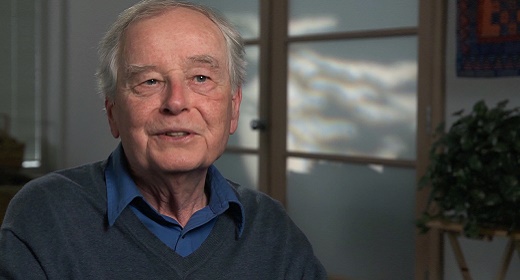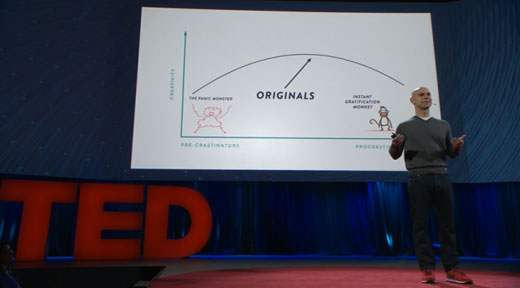by Peter Diamandis: What distinguishes Homo sapiens from almost all other species on the planet is our ability to solve problems.
But sometimes our eagerness to detect problems, likely driven by our evolutionary default software of fear and scarcity, results in overestimating a problem’s scale, timeline, and impact.
For example, we saw earlier in this series when science journalist Matt Ridley realized that the environmental doom predicted from acid rain hadn’t materialized as expected, prompting his inquiry into the accuracy of other common pessimistic assumptions.
Ridley’s research, highlighting erroneous predictions and underscoring humanity’s ability to avert disasters through innovation, birthed his book The Rationale Optimist, advocating for an optimistic worldview.
In today’s blog and the next one, we’ll look at several other historical examples of massive grand challenges that were once real (or perceived as real), but were then solved by technology or policy.
Let’s dive in…
The Great Horse Manure Crisis of 1900: Problem Solved
The sun was beginning to beat down on New York City on a typical summer morning in 1893, casting long shadows among the tall, stone-and-brick buildings. The city was alive with the hustle and bustle of horsecars navigating through New York’s labyrinth of streets. By this time, New Yorkers were making over 100 million horsecar trips each year, a far cry from the 35 million a decade earlier.
New York had become a city of horses, with more than 150,000 of them plodding its streets, each producing, on average, 22 pounds of manure daily. That was approximately 45,000 tons of manure produced each month in the city alone. On Liberty Street, the manure pile had reached an appalling height of seven feet. Vacant lots were transformed into manure mountains towering 40 to 60 feet high.
As the summer heat intensified, the city streets, layered with manure, seemed to simmer, emitting a noxious stench that held the city hostage. To quote Edith Wharton from The Gilded Age Revisited, “The stench of horses was an omnipresent part of life, an almost living entity that pervaded our nostrils daily. It was a potent brew of manure and urine, enough to make the most ironclad stomach wretch.”
When it rained, rivers of manure would flood the streets, often creeping into basements and contaminating homes.
Predictions about the future of the “Great Horse Manure Crisis” were grim. One commentator predicted that by 1930 horse manure would reach the level of Manhattan’s third-story windows.
The problem seemed insurmountable.
And it wasn’t limited to New York. In England, The Times newspaper predicted in 1894 that, “In 50 years, every street in London will be buried under nine feet of manure.”
Then, in the early years of the 20th century, hope began to glimmer. A new form of technology, the automobile, began to make its presence felt. Silent, swift, and, most importantly, clean, these machines promised a solution to the problem that had plagued the city for decades.
With the development of the internal combustion engine suddenly there were new ways to move people and goods around.
By 1912, the number of automobiles in New York outnumbered horses. The city’s last horse-drawn streetcar made its final run in 1917. The mountains of manure that had once been a fixture of city life began to disappear, and the pungent odor that had once permeated the city started to fade.
The once predicted demise of New York City buried under horse manure was but a distant, grim memory.
Instead, the streets were filled with the hum of engines and the honking of horns. Steven D. Levitt and Stephen J. Dubner summed up this story in their book SuperFreakonomics:
“When the solution to a given problem doesn’t lie right before our eyes, it is easy to assume that no solution exists. But history has shown again and again that such assumptions are wrong.”
Ozone Depletion: Problem Solved
It was the 1970s, a time when disco ruled and chlorofluorocarbons, or CFCs, were king.
Coolants in refrigerators, aerosols, industrial cleaning agents—you name it, CFCs were everywhere. But in the midst of this ubiquitous substance, a chilling discovery emerged. Three chemists, Mario Molina, Sherwood Rowland, and Paul Crutzen unveiled a sinister reality: CFCs were steadily eating away at our planet’s ozone layer, our shield against harmful solar radiation.
By 1984, evidence of our self-inflicted wound was stark.
At Antarctica’s Halley Bay research station, the ozone layer had depleted by a third compared to previous decades. A world increasingly bathed in dangerous UV radiation sparked fears of apocalyptic proportions. As Paul Newman hauntingly asked, “How do you raise crops for the few billion people on the planet if you’ve got so much sterilizing UV radiation pouring in on the Earth?”
Predictions of soaring skin cancer rates and collapsing ecosystems ignited a palpable terror globally.
Amid this looming catastrophe, the tide began to turn. A ray of hope pierced through the dark clouds in the form of the Montreal Protocol of 1987, a global treaty that signaled the end of the CFC era. A unified front against this invisible foe, the Protocol saw the near eradication of CFC production by the early 2000s, and the introduction of alternative substances, albeit with their own climatic concerns.
As the years rolled on, the seemingly insurmountable problem of ozone depletion began to recede into the annals of human memory. Indeed, today, after universal ratification of the Montreal Protocol and a constant scientific vigil, we’ve achieved a remarkable feat: the ozone layer is healing.
While a seasonal hole over Antarctica reminds us of our past transgressions, it’s closing steadily, signifying a return to pre-1980 levels by mid-century.
According to certain models, this historic international pact has thwarted up to 2 million skin cancer cases yearly and staved off millions of cataract cases globally.
Why This Matters
As Ridley’s The Rational Optimist underscores, these stories of humanity overcoming these grand challenges teach us not to be imprisoned by pessimistic assumptions.
Instead, they urge us to harness the potential of technology, policy, and collective willpower.
In our next blog, we’ll explore even more examples of how we’ve used these forces to solve problems that were at one point perceived as insurmountable.










































